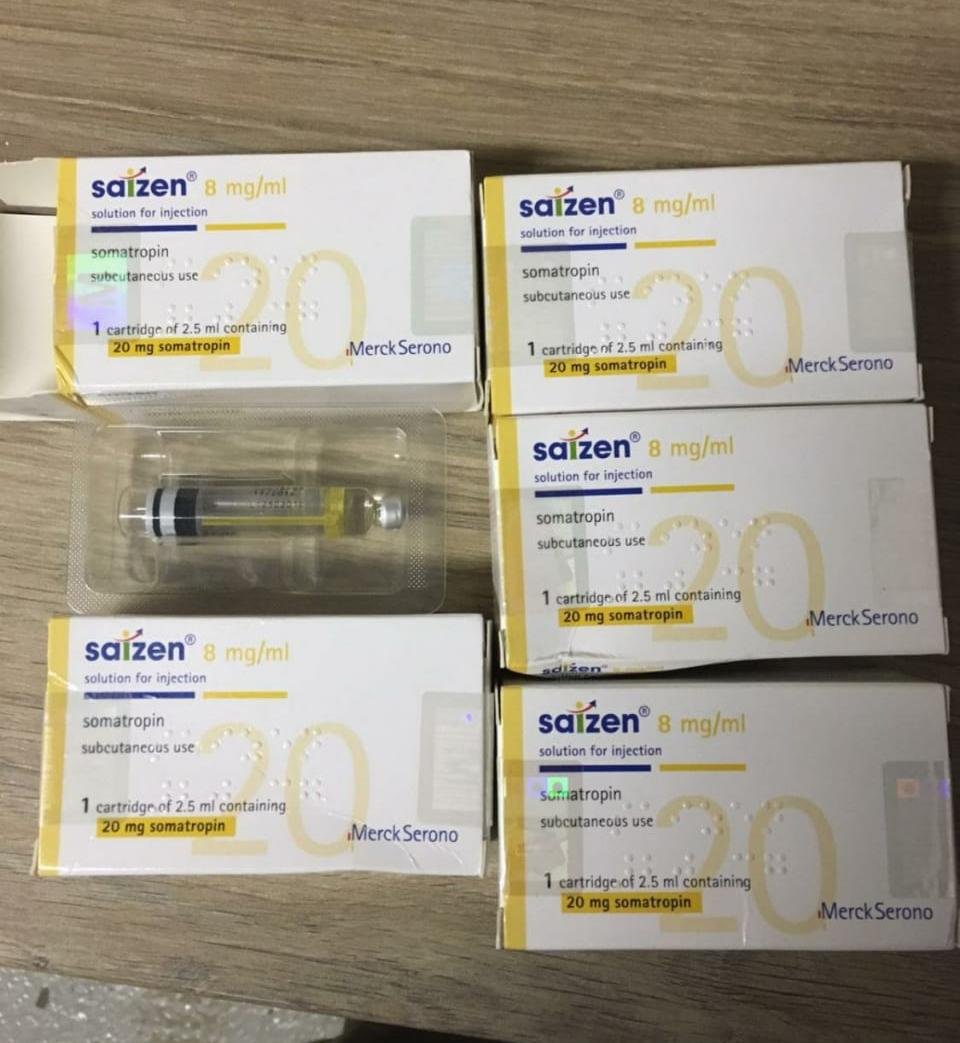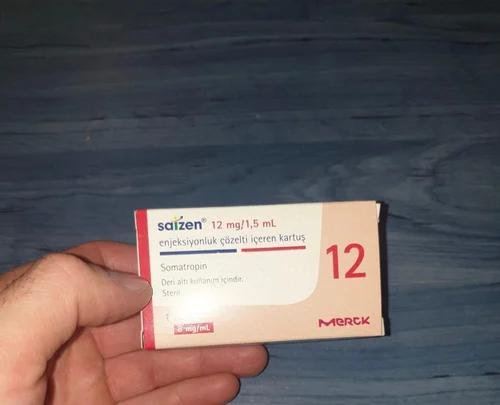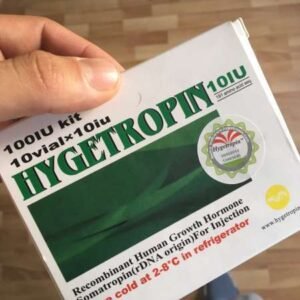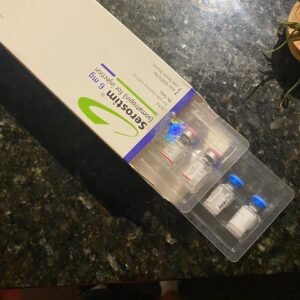Understanding Saizen: The Essential Human Growth Hormone for Growth and Development.
What is Saizen?
Saizen is a synthetic form of human growth hormone (HGH), which plays an essential role in growth and development within the human body. As a recombinant DNA technology product, Saizen is bioengineered to emulate the naturally occurring hormone secreted by the pituitary gland. This specific form of HGH is primarily utilized in medical settings for managing conditions associated with growth hormone deficiencies in children and adults. Its effectiveness in stimulating growth and development makes it a crucial therapeutic option.
The primary function of Saizen lies in its ability to promote linear growth in children, particularly by enhancing the growth of bones and muscle tissues. As a key regulator, HGH facilitates the proliferation of chondrocytes—the cells responsible for bone growth—and boosts muscle protein synthesis, leading to increased muscle mass and strength. Moreover, Saizen significantly influences various metabolic processes, contributing to the metabolism of fats and carbohydrates. This multifaceted role underscores the importance of adequate growth hormone levels for overall physical health and development.
HGH deficiency may lead to various health complications, including stunted growth in children, decreased muscle mass, and metabolic disorders in adults. In such cases, Saizen can serve as a pivotal treatment, restoring normal growth patterns and enhancing physical well-being. The administration of Saizen requires careful medical supervision to avoid potential side effects, emphasizing the necessity for professional oversight while undergoing growth hormone therapy. Overall, Saizen’s significance extends beyond mere growth stimulation, encompassing broader implications for metabolism and physical health, thereby solidifying its role as a vital therapeutic agent for individuals with HGH deficiencies.
Indications for Saizen Therapy
Saizen, a synthetic form of human growth hormone (HGH), is primarily indicated for treating various growth disorders in both children and adults. One of the most common conditions for which Saizen is prescribed is growth failure due to a deficiency of natural HGH. This deficiency can stem from various etiologies, including genetic factors, pituitary gland abnormalities, or systemic diseases that impede normal growth. Diagnosis of HGH deficiency often involves careful evaluation of growth patterns and hormone levels, allowing for timely intervention that can significantly enhance growth potential.
Another significant indication for Saizen therapy includes short stature at birth, particularly in infants who do not experience catch-up growth within a specified timeframe. These infants may require the administration of Saizen to optimize their growth trajectory, thereby reducing the risk of long-term adverse outcomes associated with persistent short stature. Additionally, patients who have experienced growth deficiencies due to chronic illnesses or conditions such as Turner syndrome, Prader-Willi syndrome, and chronic renal insufficiency may also benefit from Saizen therapy.
In adult populations, Saizen is indicated for the treatment of adult growth hormone deficiency, which may manifest as decreased muscle mass, increased body fat, and diminished quality of life. Diagnosis in adults often necessitates comprehensive endocrine assessments combined with clinical evaluations. Saizen therapy plays a critical role in restoring hormonal balance, ultimately improving physical function and overall well-being. It is crucial for healthcare providers to recognize the importance of timely diagnosis and initiate Saizen therapy when appropriate, as early intervention can lead to more favorable growth outcomes and enhance the quality of life for affected patients. The diverse indications for Saizen highlight its essential role in managing growth-related disorders effectively.
How Saizen Works in the Body
Saizen, a synthetic form of human growth hormone (HGH), plays a crucial role in various physiological processes after being administered. Once in the bloodstream, Saizen interacts with specific receptors on target cells throughout the body, initiating a series of biochemical reactions that lead to significant biological changes. One of the primary functions of Saizen is to promote cellular growth and regeneration, essential for maintaining healthy tissues and organs.
At a cellular level, Saizen stimulates the synthesis of proteins, which are vital for muscle development and repair. This anabolic effect not only helps in building lean muscle mass but also aids in recovery after physical exertion. Enhanced protein metabolism ensures that the body effectively utilizes nutrients, which is particularly beneficial for individuals involved in competitive sports or those seeking to improve their physical performance.
In addition to muscle growth, Saizen also plays a key role in regulating metabolic processes. It promotes lipolysis, the breakdown of fats, which helps to improve body composition by reducing adipose tissue. As a result, individuals using Saizen may experience a favorable shift in their body fat percentage, contributing to a leaner appearance. Moreover, this growth hormone enhances the body’s ability to utilize glucose, leading to better energy levels and overall metabolic efficiency.
The effects of Saizen extend beyond muscle and metabolism; it also supports optimal bone density and growth. By stimulating the production of insulin-like growth factor 1 (IGF-1), Saizen enhances bone mineralization and growth, which is particularly important during childhood and adolescence but can benefit adults as well. Therefore, the importance of Saizen in growth hormone therapy cannot be overstated, as it provides a comprehensive approach to improving health and well-being.
Administration and Dosage
Saizen, a form of human growth hormone (HGH), is administered in various forms, primarily as a subcutaneous injection. The injectable solution often comes in pre-filled pens or vials, allowing for both healthcare provider administration and self-administration by patients or caregivers. It is crucial for patients to receive appropriate training on how to properly inject the drug to minimize discomfort and ensure effective delivery. The proper dosage is ultimately determined by a healthcare professional, tailored to the individual’s needs based on weight, age, and specific medical condition.
Dosage protocols for Saizen typically involve starting with a lower dose, which is gradually adjusted based on the patient’s response to the treatment. The common recommendation is that the initial dosage begins at 0.2 to 0.4 mg per kg of body weight per week, divided into subcutaneous injections on a daily basis. Such dosing strategies aim to mimic the natural pulsatile secretion of growth hormone in the body. Regular follow-up appointments are pivotal, as they allow the healthcare provider to evaluate effectiveness and make necessary dosage adjustments accordingly.
Adherence to prescribed treatment regimens is vital for achieving optimal results with Saizen. Missing doses or inconsistent administration can result in inadequate growth stimulation or fluctuating hormone levels. Factors such as age, gender, body composition, and underlying health issues may influence variations in effective dosage. Monitoring for side effects, ranging from injection site reactions to more serious complications, is equally important. Routine medical assessments are recommended to assess the patient’s progress, hormone levels, and overall health. By focusing on these critical aspects of Saizen administration, patients can maximize the therapeutic benefits of this essential growth hormone throughout their treatment journey.
Potential Side Effects and Considerations
Saizen, a synthetic form of human growth hormone (HGH), is widely utilized to facilitate growth and development in individuals with HGH deficiencies. While its therapeutic benefits are notable, Saizen therapy may also present a range of potential side effects that require careful consideration. Understanding these effects is essential for patients and healthcare providers alike to ensure safe and effective treatment.
Common side effects of Saizen include injection site reactions such as swelling, pain, or redness. Other frequent issues may consist of headaches, muscle pain, and an increased risk of developing insulin resistance. It is important to monitor these side effects closely, as they may vary in severity from one individual to another. Though such effects are usually mild, they can hinder a patient’s quality of life if not addressed promptly.
Serious side effects, while less common, do warrant attention. These can include symptoms of intracranial hypertension, such as severe headaches, nausea, or blurred vision, which demand immediate medical evaluation. Other complications may involve joint pain, an elevation in cholesterol levels, or the development of carpal tunnel syndrome. Recognizing the signs of these serious complications is critical for patients undergoing Saizen therapy.
Long-term implications of Saizen use also merit discussion. Prolonged administration of human growth hormone may lead to complications such as acromegaly, characterized by abnormal growth of bones and tissues. Additionally, interactions with other medications, such as corticosteroids or diabetes drugs, can complicate treatment outcomes. Patients must maintain an open dialogue with their healthcare providers to navigate these risks effectively and make informed decisions regarding their health and wellbeing.





